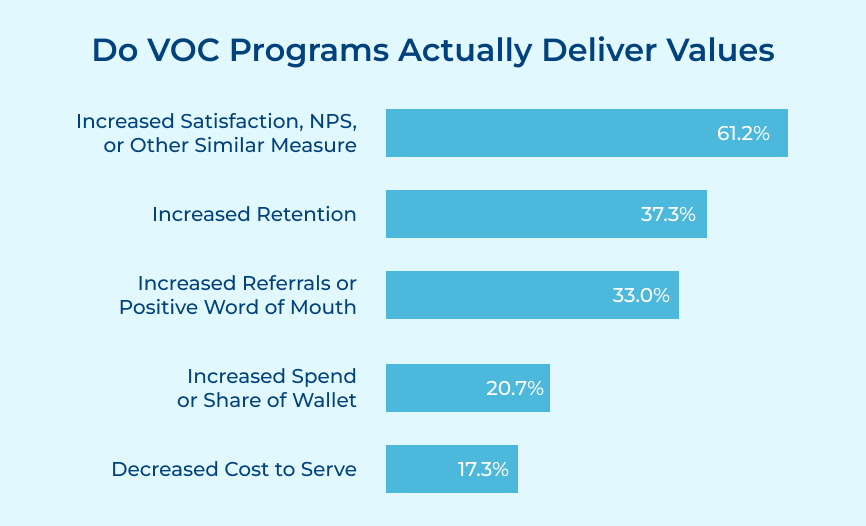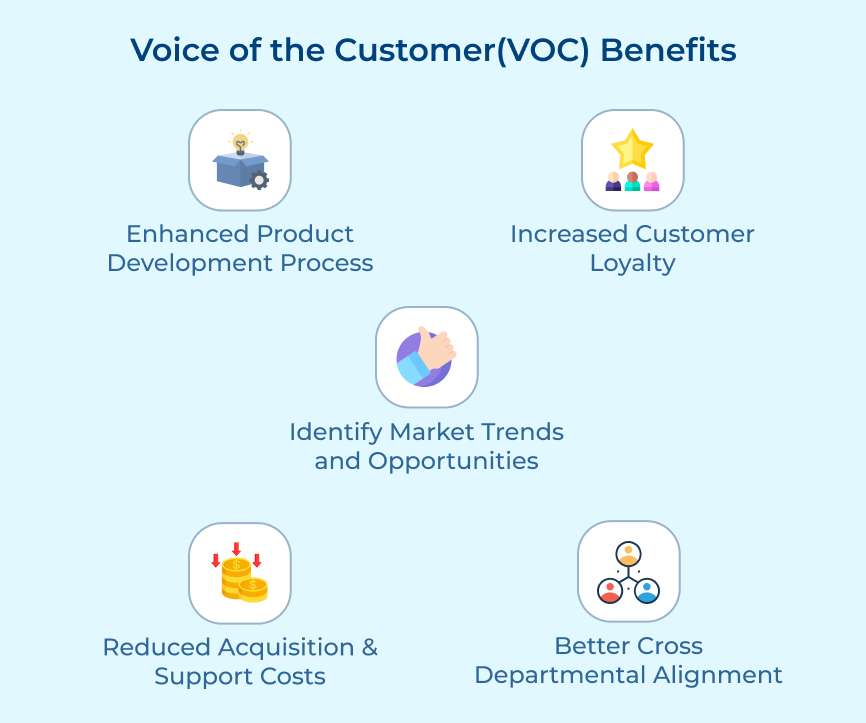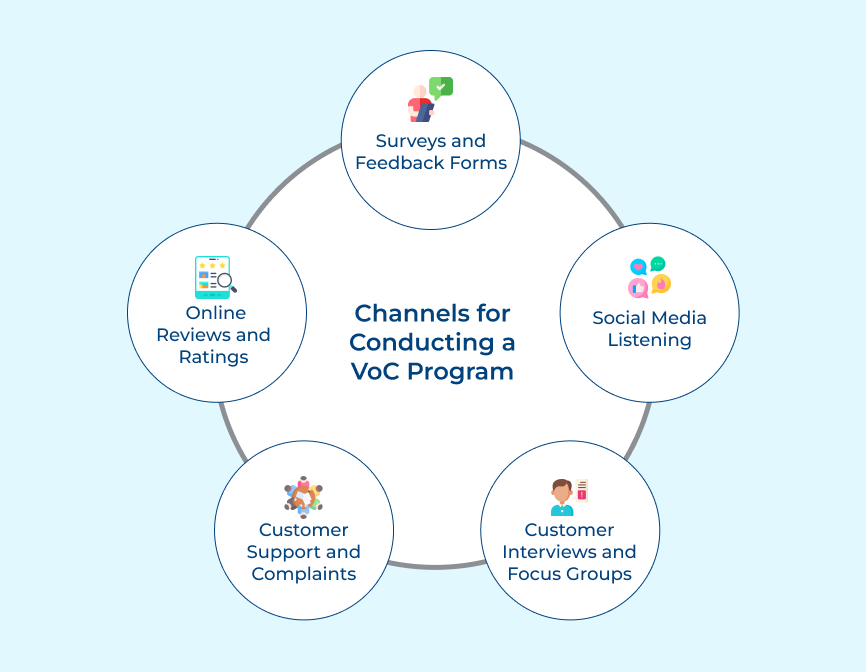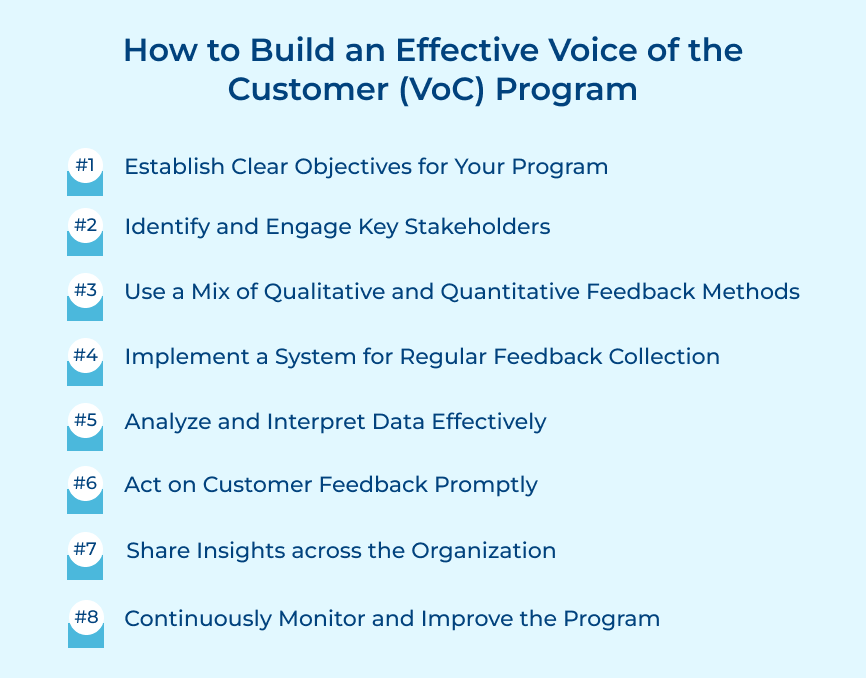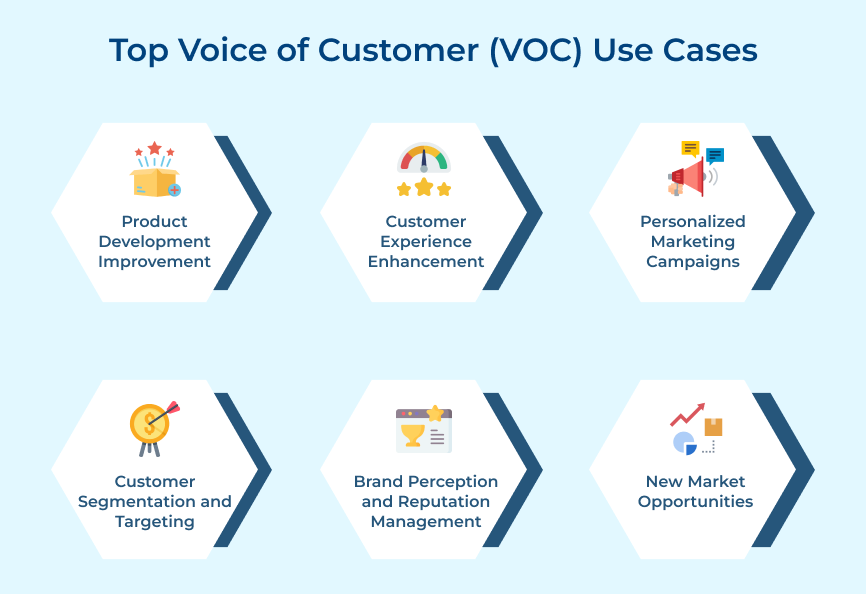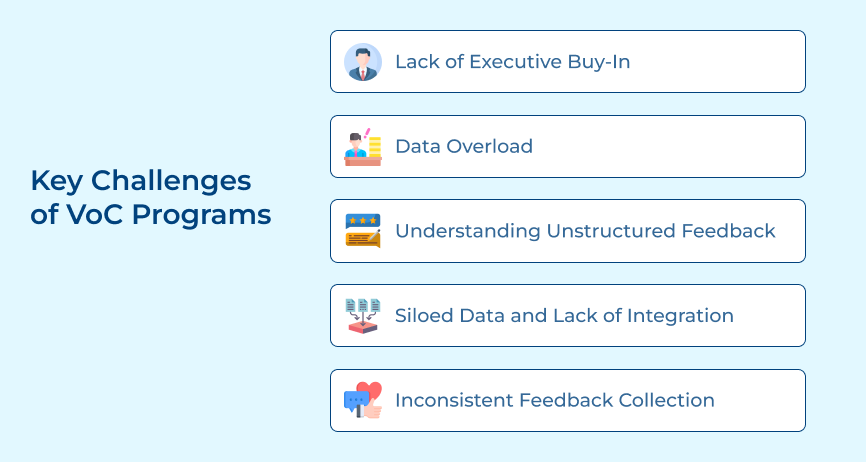1. Lack of Executive Buy-In
One of the biggest challenges in implementing a VOC program is getting buy-in from top-level executives. Companies can overcome it by presenting a strong business case, showcasing the potential benefits of the program. Make them aware of how such customer satisfaction is increased, operational efficiency is improved, and businesses get enabled to generate more revenue.
2. Data Overload
Collecting customer feedback generates a vast amount of data, which can be overwhelming to analyze. Businesses must utilize advanced analytics tools to sift through the data and identify actionable insights. It is important to define key metrics and establish a streamlined process for analyzing as well as acting upon the data.
3. Understanding Unstructured Feedback
Customers frequently share feedback through social media, reviews and open-ended surveys. These different ways make it a bit tough to categorize the feedback. Analyzing the unstructured input can be difficult, but using natural language processing makes it possible to identify patterns, understand sentiments and uncover what truly matters to customers.
4. Siloed Data and Lack of Integration
Customer data is often scattered across various departments and systems within a company. It can make it difficult to create a unified view of the customer journey. Businesses must integrate data from different sources, such as CRM systems, contact centers and social media platforms. Implementing a Customer Relationship Management (CRM) system can help consolidate and streamline customer data.
5. Inconsistent Feedback Collection
Collecting feedback consistently across all touchpoints and channels is crucial for an effective VOC program. Companies should establish standard protocols along with the tools for gathering feedback, ensuring reliability. It can include surveys, feedback forms, or automated feedback collection systems.
Successful Examples of Voice of Customer (VOC) Program
Let’s explore some successful brands across various industries that have leveraged VOC programs to enhance their business.
Airbnb
As a leading online marketplace for accommodations and experiences, Airbnb relies heavily on customer feedback to maintain trust and provide quality services. The company’s VoC program embraces various feedback mechanisms, including post-stay reviews, host ratings, and customer support interactions.
Airbnb actively addresses customer concerns, enabling them to enhance safety protocols, refine search algorithms and improve overall user experiences.
Ritz-Carlton
The Ritz-Carlton is renowned for delivering exceptional luxury experiences. The hotel chain’s VoC program, known as Guest Voice, is an integral part of its commitment to customer satisfaction.
Through surveys, comment cards, and even social media monitoring, the Ritz-Carlton collects and customer feedback in real-time to act upon real time. The feedback-driven approach allows the chain to consistently exceed guests’ expectations, be it through personalized services, comfortable accommodations, or attention to detail.
Nordstrom
Nordstrom’s VOC program, called The Voice of the Customer (VOC), consists of various initiatives. It includes customer surveys, in-store and online feedback forms along with social media listening.
Nordstrom values the feedback to curate its product offerings, tailor its services and train its employees to deliver personalized shopping experiences that keep customers coming back.
Apple
Apple’s VoC program involves gathering customer feedback through multiple channels, such as online surveys, focus groups, and usability testing. Apple analyzes the input to refine its mobile devices, operating systems and applications, ensuring they meet users’ expectations. Prioritizing user feedback has enabled Apple to maintain a loyal customer base and continuously improve its products.
Nike
Nike, a leading athletic footwear and apparel brand, places great emphasis on understanding consumer sentiments. They utilize a VoC program to gather feedback from their customers through surveys, social media listening and customer reviews.
Nike values the feedback to inform their product development, marketing strategies and customer engagement initiatives. As Nike gave a lot of importance to actively listening to the voice of their customers, it has maintained its position as a top brand in the athletic industry.
Maximize Your CX Strategy with the Voice of Customer Program
The Voice of the customer program allows businesses to understand their customers on a deeper level. Brands gain valuable insights that help optimize their return on investment (ROI) by actively listening to the feedback and opinions of customers.
A VOC program also enables businesses to identify improvement areas within their operations and address issues that may be hindering customer satisfaction. It not only leads to better customer experiences but also helps optimize business ROI by streamlining operations and reducing costs associated with customer dissatisfaction. Embracing this holistic approach to CX strategy can drive success and set businesses apart from their competitors.






